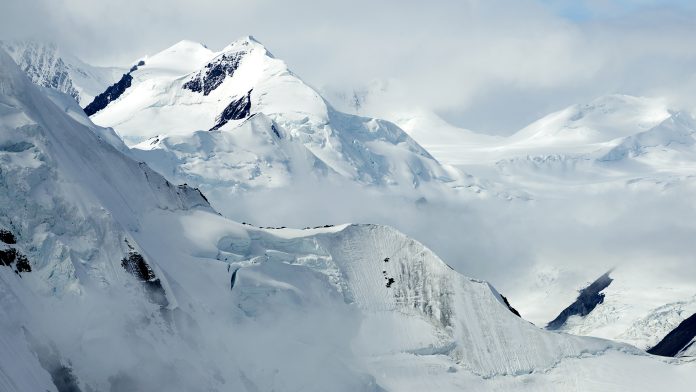With a mission to study the changing Arctic and share knowledge for broad benefit, the Arctic Institute of North America prides itself on its dedication to research, education and data management.
Exploring the unique and dynamic landscapes of the Arctic, the Arctic Institute of North America (AINA) at the University of Calgary is Canada’s oldest Arctic research institution. Together with Indigenous organisations, governments, and researchers, the Institute addresses conservation, sustainability and environmental monitoring in the Arctic. To find out more about AINA’s long-standing commitment to the Arctic, The Innovation Platform spoke with Maribeth Murray, Executive Director of the Arctic Institute of North America.
Why is collaboration critical for Arctic research? Can you discuss the importance of strong relationships with other research institutions and Indigenous communities at the Arctic Institute of North America (AINA) at the University of Calgary?
Seven nations have Arctic territory, each with unique social, cultural and political identities. Importantly, the Arctic is home to Indigenous People of many different cultures, languages and traditions. The rapid transformation of the Arctic under conditions of climate change presents a suite of system-scale shifts that have environmental impacts locally, regionally and globally, impacting people and living resources in increasingly unpredictable ways.
Understanding, responding to and mitigating Arctic change requires a multidisciplinary, multinational and multicultural approach. For example, the development of a comprehensive environmental observing system that monitors change on land and in the oceans is far too large an initiative for any one institution or country to tackle alone.
At AINA, we work with partners across Canada and around the world to conduct impactful research and build proactive programmes that can help address pressing issues such as loss of biodiversity, ocean acidification, and food insecurity. These partnerships enable all of us to tackle big issues, leverage diverse expertise and resources, and address Indigenous priorities as well as science priorities.
Can you provide examples of successful collaborative projects?
AINA spearheaded the development of the Canadian Consortium for Arctic Data Interoperability (CCADI), a collaboration among Canadian Arctic data centres with the common goal of providing ethically open, accessible, and comprehensive digital resources to the broadest possible audience of data users.
Founded in 2015, its members include Arctic researchers and data managers from a range of Canadian universities, Indigenous organisations, government departments, industry, and members of the non-profit sector.
In 2023, with funding from the Canada Foundation for Innovation (CFI), the CCADI launched the Arctic Research Data Infrastructure (ARDI), a cloud-based cyberinfrastructure with distributed services located at https://ccadi.org. The ARDI builds capacity across a network of linked data centres with common standards, practices, tools, and expertise, and facilitates data discovery and description, enabling data to be shared across systems for upload, analysis, and visualisation.
To date, the ARDI has been used to better understand Arctic system dynamics in three critical areas:
- Vulnerability of coastal heritage resources to sea ice loss, coastal erosion and storm surge.
- Harmonisation of disparate data sets to improve the utility and increase the use of information from autonomous weather stations.
- Influence of interactions in the marine environment on ocean acidification.
Why is it important to consider conservation and biodiversity in the Arctic? What are the threats to this environment?
The living resources of the Arctic are central to the lifeways of Indigenous People, supporting food security and sovereignty and providing opportunities for economic growth and stability, as well as being of great cultural import.
Many species are also important to the global community – fish in particular. Arctic species are threatened by climate change via shifts in the seasonal onset of plant growth, unpredictable weather, loss of sea ice, ocean acidification, new diseases, and the northward movement of both animal and plant species not native to the region.
Human activity in the Arctic also presents a challenge as there is increased marine traffic, pollution, onshore and offshore infrastructure development, and commercial resource extraction via mining and fisheries. Conservation of living species is critical to maintaining healthy populations, and biodiversity is key to the resilience of communities and ecosystems.
How is AINA addressing these threats? What are the main conservation and biodiversity projects currently being undertaken?
At AINA, we are involved in two large projects to support Arctic conservation and biodiversity, both of which are supported by GENOME Canada. They are focused on ways to mobilise genomics and genomics-derived tools like environmental DNA (eDNA) to a broad audience of potential end users such as Indigenous communities, wildlife co-management entities, biologists, and others who are actively engaged in or have a vested interest in maintaining healthy and vibrant populations of wildlife.
Genomics tools can be useful for environmental monitoring and, going forward may be able to support the conservation of threatened and endangered species, such as muskoxen in the western Canadian Arctic, as we develop an improved understanding of how aspects of their genome are or are not adapted to their changing environment – for example, resistance to new parasites.
We work with partners in Canada, including Indigenous organisations, to make genomic information accessible, to identify priorities for conservation and whole genome sequencing, and to support local management needs by making material available in unique and culturally appropriate formats, including via innovative cyberinfrastructure. In this regard, AINA is a mediator of information, bringing together diverse groups with common interests but very different sets of expertise, including Indigenous expertise.
How do AINA’s Arctic Observation programmes tackle global issues? What cutting-edge technology is used to facilitate these programmes?
AINA has been a key player in the development and ongoing delivery, since 2013, of the Arctic Observing Summit (AOS), a biennial summit bringing together an international community of researchers, Indigenous People, operational agencies and others to design and implement an internationally supported observing system that will flow data information out to address societal needs and provide broad benefit. Summit working groups address such issues as new and needed technologies, data sharing and data systems improvement, innovative solutions for pollution detection, gaps in the current observing system, and Indigenous observing priorities and ways to further improve efforts at co-design and co-implementation of observing systems.
At our Kluane Lake Research Station in Yukon, we support scientists from around the world who are engaged in Arctic research. We collect and share observational data as members of the WMO Global Cryosphere Watch. Recent research has focused on using satellite-derived data to examine shoreline change in the western Canadian Arctic, tree canopy change in the Yukon, and shipping activities and accident incidents using satellite-derived data. All our projects are multi-disciplinary and multi-institutional, and almost all involve the use of social, natural, and scientific approaches.
What are some of the significant observations or discoveries made by AINA in recent years, and what can we anticipate next?
We are currently focusing much of our work on developing innovative technologies for using renewables at our research station in Yukon, working in partnership with communities, Yukon businesses, government and partners in Europe. Our goal is to create a research facility that is ultimately a net zero enterprise and can operate year-round entirely on renewables. We hope to create a model that could be taken up by rural and remote communities to reduce dependence on fossil foods and support local food production.
In addition, we have research focused on sea ice change in the Baffin Bay region with an emphasis on understanding how ice change impacts mobility across sectors (commercial shipping, small-scale fisheries, individual hunters and trappers) and species such as migratory whales, seals, and walrus. Much of this work is dependent upon satellite data, although we draw on other sources of information, from ship tracking to marine mammal survey data.
Please note, this article will also appear in the 19th edition of our quarterly publication.





